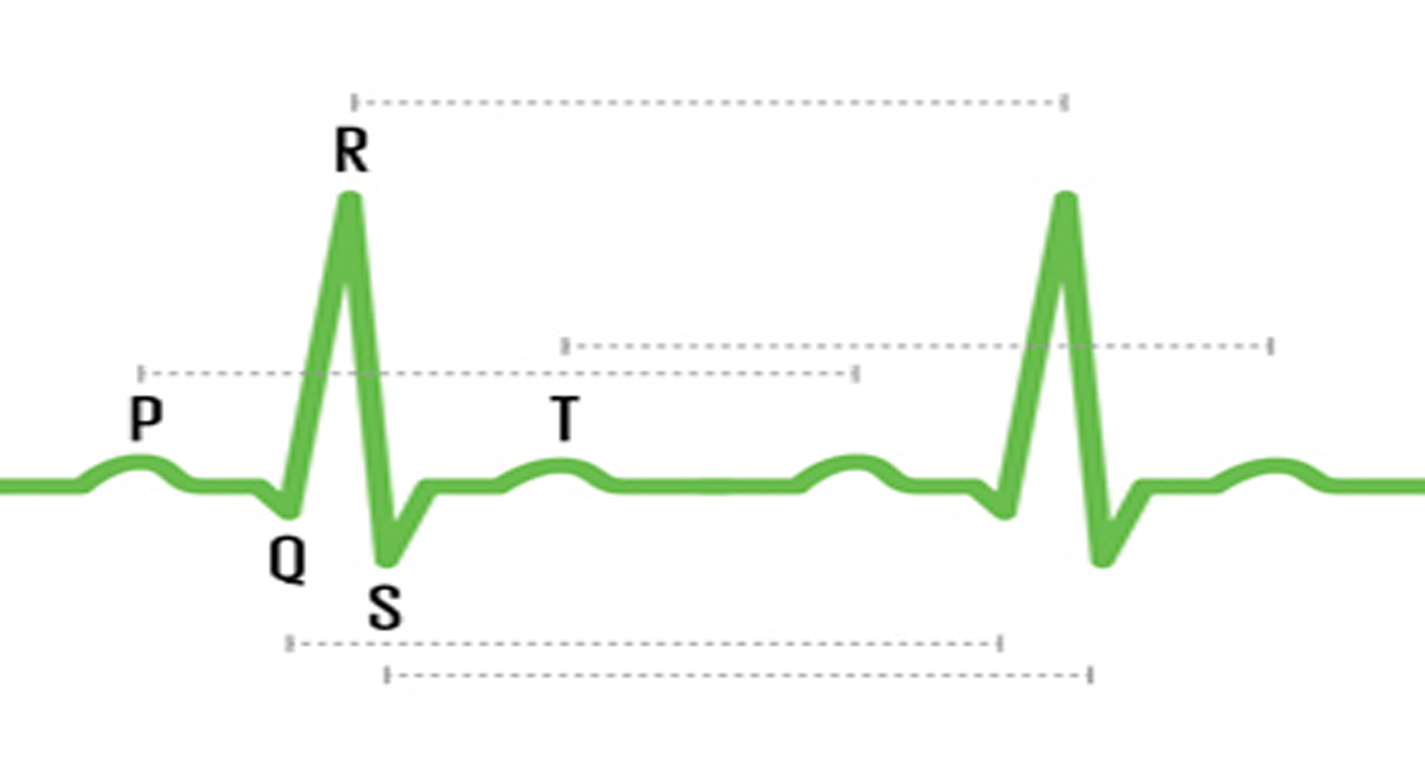Method and Device for Biometric Verification and Identification
sensors
Method and Device for Biometric Verification and Identification (TOP2-202)
Biometric Subject Verification and Identification Based Upon Electrocardiographic Signals
Overview
NASA has developed a method for verifying the identity of a person based on his or her heartbeat electrocardiogram signal. The technique uses an algorithm that has been shown to be more reliable than other current procedures, such as fingerprint verification, retina verification, or detecting biometric identifiers from heart signals. It eliminates artifacts and abnormal beats, thereby reducing overall error. The process automatically extracts from one or more electrocardiographic leads (channels) a set of biometric features which are characteristic to an individual and can be employed to verify the identity of one individual or to identify an individual from a group. The electrocardiographic signal is recorded in each lead from a pair of electrodes placed on the skin of the individuals arms or legs. Each electrocardiographic lead characterizes the hearts electrical vector as projected on a separate dimension. This allows a multidimensional characterization of the hearts electrical activity, which can result in improved subject verification performance.
The Technology
The advantage of using cardiac biometrics over existing methods is that heart signatures are more difficult to forge compared to other biometric devices. Iris scanners can be fooled by contact lenses and sunglasses, and a segment of the population does not have readable fingerprints due to age or working conditions. Previous electrocardiographic signals employed a single template and compared that template with new test templates by means of cross-correlation or linear-discriminant analysis.The benefit of this technology over competing cardiac biometric methods is that it is more reliable with a significant reduction in error rates. The benefit of this technology is that it creates a probabilistic model of the electrocardiographic features of a person instead of a single signal template of the average heartbeat. The probabilistic model described as Gaussian mixture model allows various modes of the feature distribution, in contrast to a template model that only characterizes a mean waveform. Another advantage is that the model uses both physiological and anatomical characterization of the heart, unlike other methods that mainly use only physiological characterization of the heart. By combining features from different leads, the heart of the person is better characterized in terms of anatomical orientation because each lead represents a different projection of the electrical vector of the heart. Thus, employing multiple electrocardiographic leads provides a better performance in subject verification or identification.


Benefits
- Better performance by employing multiple electrocardiographic leads
- Uses both physiological and anatomical characterization of the heart
- Eliminates artifacts and abnormal beats that overall errors are reduced
Applications
- Personnel identity verification
- Mobile biometrics
- Justice/Law enforcement
- Homeland Security/Airports/ National ID documents
- Military Organizations
Similar Results

HeartBeatID
Cardiac muscle is myogenic and is capable of generating an action potential and depolarizing and repolarizing signals from within the muscle itself. An intrinsic conduction system (ICS), a group of specialized cardiac cells, passes an electrical signal throughout the heart. This technology is a method and associated system to identify a person based on the use of statistical parameters, peak amplitudes and/or time interval lengths and/or depolarization-repolarization vector angles and/or depolarization-repolarization vector lengths for PQRST electrical signals associated with heart waves. The statistical parameters, estimated to be at least 192, serve as biometric indicia to authenticate or to decline to authenticate an asserted identity of a candidate person. There are three on-line modes of operation enrollment, verification, and identification as well as two off-line modes statistics and settings. In enrollment the raw electrocardiography (ECG) signal is processed and the results in the form of parameters are serialized and saved. Verification and Identification procedures use the feature parameters for recognition (classification) of subjects based on the same kind of parameters (features) of heartbeats extracted from the ECG signal of a person to be verified or identified.

Digital to Analog Transformation and Reconstruction of ECG Data
NASA innovators developed a method and apparatus for digital to analog conversion and reconstruction of multichannel electrocardiograms. The technology uses an algebraically optimized hardware configuration and software format that re-creates the presence of a connected patient when the patient is no longer actually present. This simplified method makes it easier and possible to transmit stored digital ECG data collected on one machine into another for an automated second opinion. Along with this functionality, the technology would make it possible to share the data collected for difficult-to-interpret 12-lead ECGs and rhythms with others in different locations.
The device allows for very inexpensive ECG hardware front ends to be utilized for data collection since the digital data obtained will always be accurately convertible back to analog for fuller analysis at any central ECG receiving station. This capability would be useful for several situations, such as patients being monitored for heart conditions at home, student athletes participating in ECG screening programs, and individuals being screened in underdeveloped countries or remote areas. The NASA developed technology would be useful in collecting ECG data in environments such as military mobile units, oil platforms, mountaineering, and expeditions.
This NASA Technology is available for your company to license and develop into a commercial product. NASA does not manufacture products for commercial sale.

System for Incorporating Physiological Self-Regulation Challenge into Parcourse/Orienteering Type Games and Simulations
Although biofeedback is an effective treatment for various physiological problems and can be used to optimize physiological functioning in many ways, the benefits can only be attained through a number of training sessions, and such gains can only be maintained over time through regular practice. However, adherence to regular training has been a problem that has plagued the field of physiological self-regulation limiting its utility. As with any exercise, incorporating biofeedback training with another activity encourages participation and enhances its usefulness.

Full Spectrum Infrasonic Stethoscope for Screening Heart, Carotid Artery, and Lung Related Diseases
Microphones and stethoscopes are regularly used by physicians to detect sounds when monitoring physiological conditions. These monitors are coupled directly to a person's body and measure in certain bandwidths either by listening or by recording the signals. The physiological processes such as respiration and cardiac activity are reflected in a different frequency bandwidth from 0.01 Hz to 500 Hz. This technology can monitor physiological conditions in the entire bandwidth range. Signals can also be wirelessly transmitted, using Bluetooth, to other recording devices at any other location.

Low Cost Star Tracker Software
The current Star Tracker software package is comprised of a Lumenera LW230 monochrome machine-vision camera and a FUJINON HF35SA-1 35mm lens. The star tracker cameras are all connected to and powered by the PC/104 stack via USB 2.0 ports. The software code is written in C++ and is can easily be adapted to other camera and lensing platforms by setting new variables in the software for new focal conditions. In order to identify stars in images, the software contains a star database derived from the 118,218-star Hipparcos catalog [1]. The database contains a list of every star pair within the camera field of view and the angular distance between those pairs. It also contains the inertial position information for each individual star directly from the Hipparcos catalog. In order to keep the star database size small, only stars of magnitude 6.5 or brighter were included. The star tracking process begins when image data is retrieved by the software from the data buffers in the camera. The image is translated into a binary image via a threshold brightness value so that on (bright) pixels are represented by 1s and off (dark) pixels are represented by 0s. The binary image is then searched for blobs, which are just connected groups of on pixels. These blobs represent unidentified stars or other objects such as planets, deep sky objects, other satellites, or noise. The centroids of the blob locations are computed, and a unique pattern recognition algorithm is applied to identify which, if any, stars are represented. During this process, false stars are effectively removed and only repeatedly and uniquely identifiable stars are stored. After stars are identified, another algorithm is applied on their position information to determine the attitude of the satellite. The attitude is computed as a set of Euler angles: right ascension (RA), declination (Dec), and roll. The first two Euler angles are computed by using a linear system that is derived from vector algebra and the information of two identified stars in the image. The roll angle is computed using an iterative method that relies on the information of a single star and the first two Euler angles.
[1] ESA, 1997, The Hipparcos and Tycho Catalogues, ESA SP-1200



